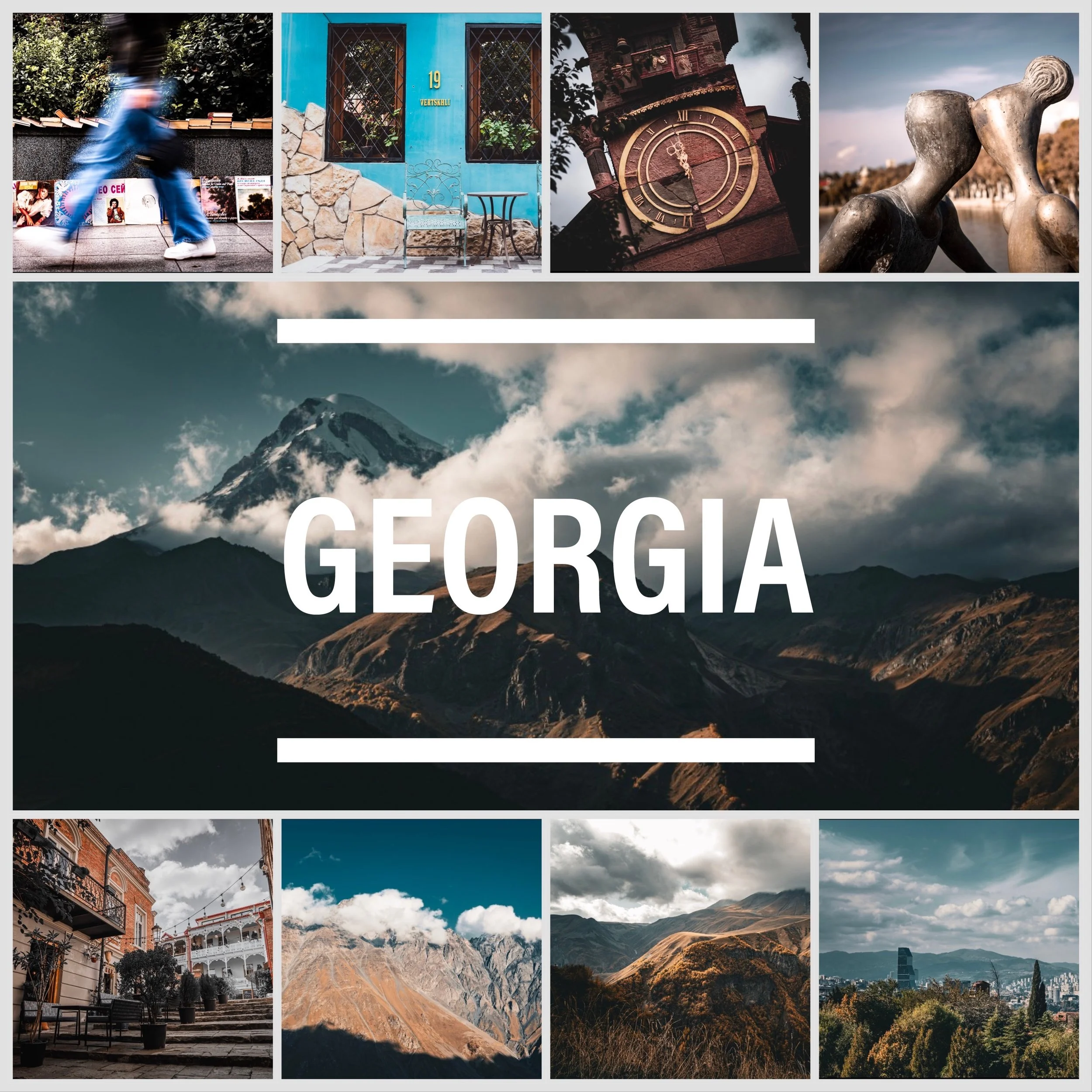Deep Life Reflections: Friday Five
Issue 37 - Big Ideas
Hello and welcome to Issue 37 of my weekly email newsletter, Deep Life Reflections: Friday Five, where I share five things I’m enjoying, thinking about, and find interesting.
Here’s my Friday Five this week.
1. What I’m Reading
A Short History of Nearly Everything. By Bill Bryson.
Science was never one of my strongest subjects at school. I had many questions about the world, but found simple answers hard to come by. It was all formulas and dense textbooks. Science—at least for me—wasn’t simple. It turns out I wasn’t alone.
Author Bill Bryson had the same frustrations with science. In his book, A Short History of Nearly Everything, he attempts the audacious feat of explaining the last 13.7 billion years in about 500 pages. Unlike the textbooks from school, Bryson has a gift for explaining the most difficult subjects in the clearest possible way. Subtitled, ‘A Journey Through Space and Time’, Bryson takes us from the creation of the universe to the rise of civilisation to the nuclear age, and a lot in between. It’s a warm, entertaining, and highly accessible journey by an author who maintains a healthy dose of good humour.
Bryson reveals how he got the idea for the book when he was on a long flight across the Pacific. Staring out of the window at the moonlit ocean, it dawned on him that he didn’t know the first thing about the only planet he was ever going to live on. From this realisation, an idea grew, culminating in a three-year research project talking with some of the world’s foremost scientists, simplifying complex notions into relatable language, with powerful analogies and metaphors. The result is a kind of rough guide to science for everyone.
Consider just one of Bryson’s many vivid analogies to convey the awe of our planet. To get a sense of the Earth’s immense depth, picture it as a stack of 100 standard A4 sheets of paper, each sheet representing 40 miles of depth. The deepest hole we’ve drilled is Russia’s Kola Superdeep Borehole, which is about 7.5 miles deep, a mere dent, not quite one-fifth through the top sheet of that hypothetical paper stack.
This is the type of book I wish my school had handed to me. Indeed, all schools would be better places with such a book. But for the moment, it’s a gift to learners everywhere.
2. What I’m Watching
The Blair Witch Project. Directed by Daniel Myrick & Eduardo Sanchez.
I love Halloween. Not for the costumes, the pumpkins, the trick-or-treating, or the sweets (well, maybe the sweets), but because of the tradition of settling in for a Halloween or Horror-themed movie every October 31st. Last year, it was Tim Burton’s gothic Beetlejuice; this year, I returned to the first film I ever bought on DVD: The Blair Witch Project. (I’m curious if anyone else still remembers—or still owns—the first film they bought on DVD?)
The film’s premise is simple. A stark black screen informs us that in October 1994, three student filmmakers disappeared in the woods near Burkittsville, Maryland, while shooting a documentary. Ominously, a final line is added: ‘A year later their footage was found’. This found footage—grainy and hand-held—is what we then watch for the rest of the film.
Three factors make The Blair Witch Project such an effective horror movie: its originality, creativity, and simplicity. Student filmmakers Daniel Myrick and Eduardo Sanchez had the idea for the film when they realised people’s primal fear of the unseen. This is what they captured and unleashed on audiences around the world. We don’t see an awful lot in the film, but we hear, feel, and sense something terrible. It’s left to our overactive imaginations to imagine the worst, and here lies the power of the film.
Created on a shoestring budget of $60,000, the film grossed $248 million (setting a Guinness World Record for Budget-to-Box Office ratio.) A major reason for the film’s success was the rich and extensive mythology crafted by Myrick and Sanchez ahead of its release. They recognised the early potential of the internet—still in its infancy in 1999—to sow a fictitious backstory about eighteenth-century witchcraft, a child serial killer, and a cursed town, complete with manufactured newspaper articles, newsreels, and staged interviews. The result was one of the first viral marketing campaigns, blurring the lines between reality and fiction so effectively that many thought they were watching real events.
In today’s world, such a ruse would be debunked on social media within an hour. It was actually quite controversial then, so in our highly charged times of today, it might well come under the ire of “fake news”. But all that aside, The Blair Witch Project remains an original piece of work from two filmmakers who understood that the mind can conjure horrors far beyond what any screen might display, and that sometimes less is truly more.
3. What I’m Contemplating
This week I’ve been contemplating the nature of ideas—how they’ve shaped our world in both random and structured ways.
Ideas often begin as slow hunches, maturing and connecting to other ideas over time, demanding patience and cultivation. Other ideas strike suddenly, fully formed in unexpected moments. Ideas can even come from errors and previously discarded ideas: Alexander Fleming only discovered penicillin because of an error, while Johannes Gutenberg ingeniously combined the (discarded) ancient technology of the wine screw press with his knowledge of metallurgy to invent the printing press.
As civilisations formed—towns and cities—our networks expanded, exposing us to new ideas. In the past, a novel idea by one person could perish, as there was no network to share it with. Connection then—whether a conversation, a shared space, or a meeting of minds—is a major facilitator of ideas. Studies support this, showing that the most creative people often have broad social networks beyond their immediate circle. New contexts bring new ideas.
We too can use our communities and surroundings to generate new ideas. That can include having a dedicated creative space at home and/or regular gatherings with like-minded people for discussion and debate. We can also look to the wisdom of the past as a resource. For every person alive today, fourteen have passed away. That’s a lot of collective lessons and insights we can tap into.
In our quest for ideas, we can stay humble. Einstein, when asked if he kept a notebook to record his ideas, responded with mild and genuine surprise: “Oh, that’s not necessary. It’s so seldom I have one.” Fortunately for humanity, when he had one, they tended to be good.
4. A Quote to note
“There is one thing stronger than all the armies in the world, and that is an idea whose time has come.”
- Victor Hugo
5. A Question for you
How could you take an idea you’ve had recently and develop it further with the perspectives and expertise of a friend, family member, colleague or someone from your community?
This week’s featured image was created by artist Daniel Ramos.
Bonus: New Photography - Georgia: The Crossroads of Europe and Asia
Before you go, I invite you to explore the latest addition to my photography portfolio: Georgia. I spent a long weekend there last month, including the capital city, Tbilisi, and the imposing Caucasus Mountains. Maybe you’ll find some inspiration amongst them for your next big idea. Explore here or click the image below.
Sharing and Helpful Links
Want to share this issue of Deep Life Reflections via text, social media, or email? Just copy and paste this link:
And if you have a friend, family member, or colleague who you think would also enjoy Deep Life Reflections, simply copy, paste and send them this subscription link:
https://www.deeplifejourney.com/subscribe
Don’t forget to check out my website, Deep Life Journey, for full content on my Pillars, Perspectives & Photography.
And you can read all previous issues of Deep Life Reflections here.
Thanks for reading and have a great weekend.
James


